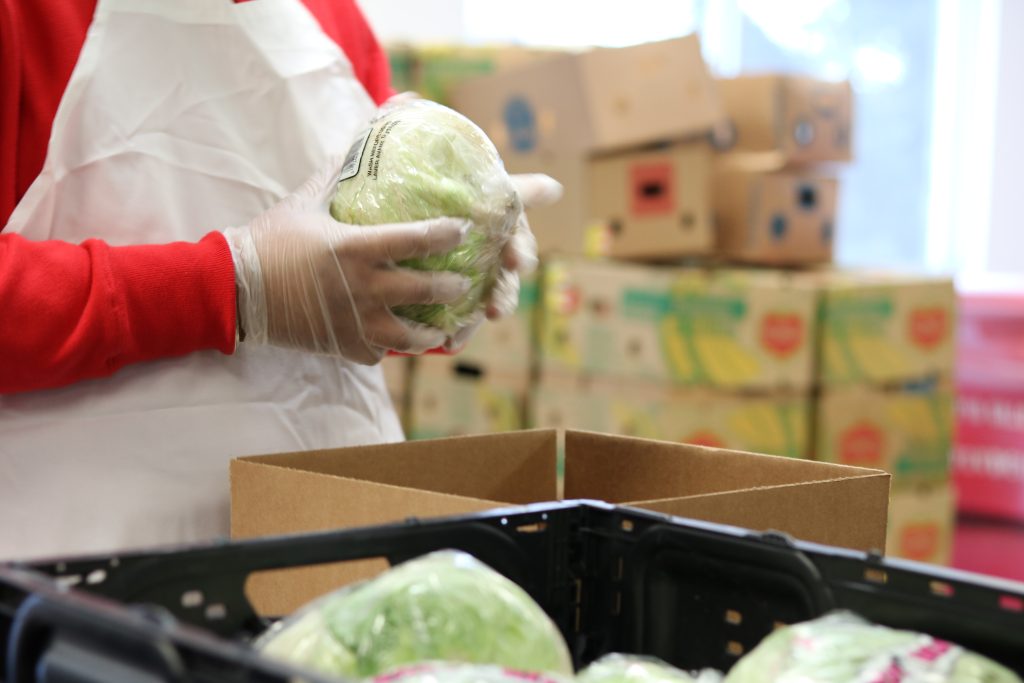
By Michelle Orge, President and CEO of Second Harvest Foodbank of Southern Wisconsin.
In my 20 years in food banking, I have worked at organizations in three states serving communities not unlike those in southwestern Wisconsin. What I have learned is that we can’t keep doing things the way we used to, and we need to innovate how we provide support to our neighbors.
The need for our work and our advocacy remains critically important, but the manner in which we work towards eliminating hunger has evolved thanks to innovative and comprehensive ideas that are led by the neighbors, partners and the communities we serve. The solutions to ending nutrition insecurity start with community voice and are achieved with adaptive partners willing to innovate together.
The type of innovation I’m speaking of is possible in large part because Second Harvest Foodbank of Southern Wisconsin is much more than a distributor or warehouse. We are a community-based service organization collaborating with more than 300 food pantries, schools, after-school programs and other nonprofit organizations across a 16-county region.
In addition to providing food support, our partners’ work may also include providing housing support, individual and communitywide health care, and much, much more. Our role is to provide food, use our infrastructure and leverage our relationships, which allows our partners to focus their resources and capacity toward prioritized programming.
Look at our Farm to Foodbank Initiative, which is one of the largest programs of its kind in the country. It creates a vital connection between local farmers and food producers and families struggling with hunger in southwestern Wisconsin. The program gets more freshly harvested, nutritious food to those facing food insecurity, reduces our collective carbon footprint, and in 2022, the program generated $12 million in local economic activity. This is innovation that removes cost and accessibility barriers while advancing food equity, promoting sustainability and creating a consistent source of revenue for local farmers and food producers.
The program is a success because we have the partners, volunteers, farmers and community leaders across the region who recognize the importance of this innovation — and they continue to be ready to put this idea into action.
We’re innovating in other areas of the food ecosystem, too. Our robust food rescue program allows us to work directly with suppliers, distributors, farmers and retailers to safely recover surplus food for redistribution through our network of partners. Wisconsin’s Department of Natural Resources estimated that over 1.7 billion pounds of edible food ended up in landfills last year. We’ve been challenging that status quo by stepping in to ensure that when great food is still in its prime, we connect it to families through our mobile pantries and network of partners. Food rescue is valuable as a food resource to those who are facing nutrition insecurity, and it is good for the environment.
Today, the team at Second Harvest and I witness and adapt to change at a scale I’ve not experienced in the past 20 years. Changes in commodity prices, supply chain, legislative policy, federal grants, community need, affordable housing, public health and educational funding are continuously in motion. Yet all of these variables impact food insecurity in southwestern Wisconsin. That’s why we innovate. Innovation — new ideas that close the gaps — allows us to remain flexible, adapting to the changes that are out of our control.
I don’t know what food banking will look like in another 20 years. What I do know is that we’re going to keep seeking out new answers with community voices driving innovation. If there is an opportunity to support our partners more efficiently, we’re going to explore it. If our community tells us we can meet their need more effectively, we’re going to listen.
